|
52. Maculinea arion (Linnaeus, 1758) / Large blue / Lycaenidae – Polyommatinae
NL: tijmblauwtje / D: Schwarzegefleckter Bläuling, Schwarzfleckiger-Ameisen-Bläuling, Quendel-Ameisenbläuling / F: azure du serpolet, l’argus blue à bandes brunes
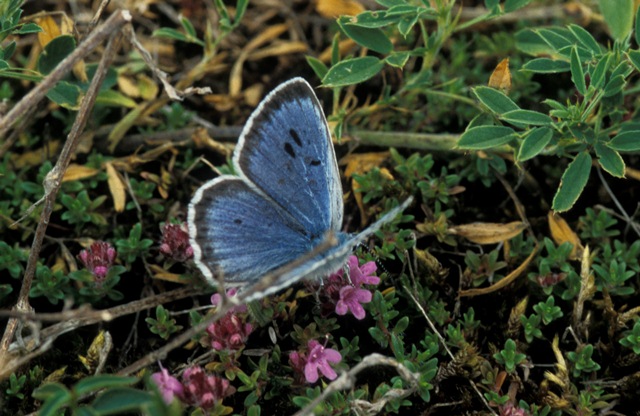 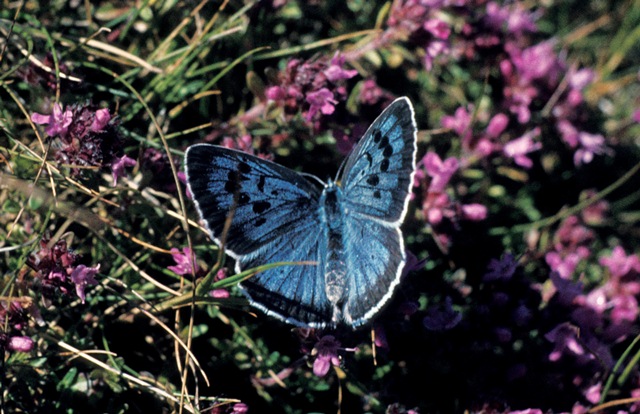 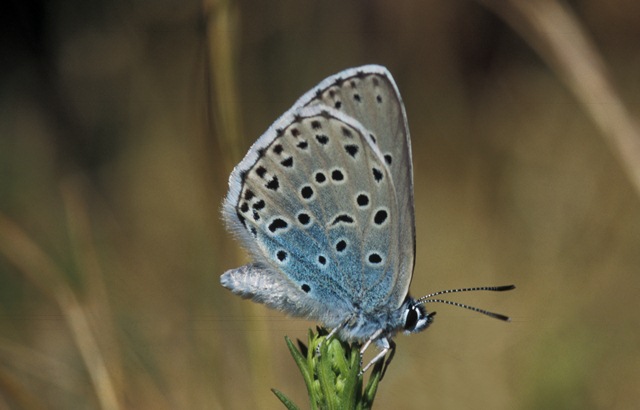
Photographs: Frits Bink ©.
Medium-sized, wing length 20 (16-22) mm. This species occurs now only in the south of Luxembourg. It disappeared from Wallonia and from the Netherlands in 1949. In the 19th century it was also known from a locality near the city of Groningen.
Butterfly is on the wing from end-June until early-August, peaks early-July. It is known from maritime and continental climates, amplitude 5 to 17. Required heat sum is 500°d, maximum tolerated 2000°d, corresponding climate windows 21 and 38 weeks.
In England the species is the subject of biological and ecological studies. It became extinct in 1979 and was introduced unsuccessfully using specimens from the Dordogne, France and later reintroduced in 1983 using specimens from Öland (pers. com. Anders Nielsson 1982). This introduction was very successful and there are several colonies in Cornwall (Asher et al. 2001: 176-179). It transpired that keeping the vegetation very short, by grazing cattle and rabbits, created a suitable microclimate for this butterfly.
Because of the carnivorous behaviour of the larvae in the ants nest, the number of ant larvae must be large; a larva may consume up to 1200 ant grubs (Thomas & Lewington 1991: 106).
In warmer parts of Europe there is no need for short vegetation and the species may occur in taller vegetation were the microclimate is much cooler near to the ground. In this case other plant species than thyme are suitable, such as marjoram (Origanum vulgare).
Ecological characteristics
Behaviour over time
Overwintering: larva, half grown in fourth (last) instar in ant nest.
Reproduction: oviposition starts after 2-4 days when the body contains about 170 eggs, estimated potential production 1.4 times as much.
Larval feeding periods: about 17 days in flower and fruit of the thyme, in summer and autumn 4-5 weeks on grubs in ant nest , in spring another 4-6 weeks.
Generations: always one.
Spreading of risk: not observed.
Life cycle: egg 7 (6-8) days; larva 47 weeks; pupa about 24 days.
Life span of adult: short, 2 weeks.
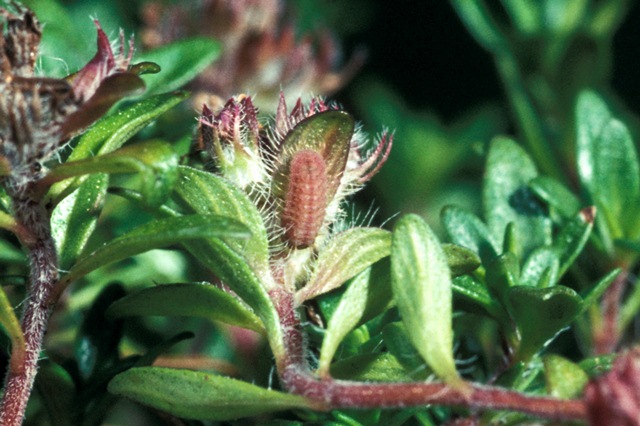 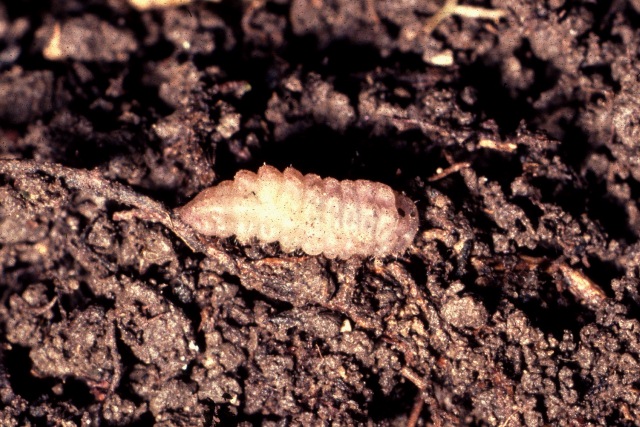
Photographs: Frits Bink, Sepp Weidemann ©.
Behaviour in space
From stay-at-home to migrant: stay-at-home, spatial requirement modest.
Finding a mate: male patrols.
Orientation in the landscape: open field with short grass with thyme, probably also detecting the presence of ants.
Oviposition: on the flower buds.
Defence
Threats from other organisms: alien ants.
Myrmecophily: obligate, honey gland and pores functional, host ants are Myrmica sabuleti, M. scabrinodis (Thomas et al. 1989).
Threats from the environment: risk of lack of brood success of the ant nest.
Feeding habits
Adult: nectar, prefers flowers of own host plan thyme.
Larva: adaptation to the odour of the suitable ants’ nest and feeds on grubs.
Larval foodplants
Plant species: Lamiaceae, Origanum vulgare, Thymus praecox, T. pulegiodes, T. serpyllum.
Journal
Rearing experiments:
1. Based on specimen from Ljugarn, Gotland, Sweden:
20 July 1982: female captured.
31 July: eggs hatched.
9 August: one larva had crawled around, waiting to be adopted by an ant.
2. Based on specimen from Hummelbosholm, Gotland, Sweden:
8 July 2004: fresh female captured.
12 July: had laid 15 eggs, dissected (see table 52).
18 July: first eggs hatched.
19 July: seven eggs hatched.
28 July: larvae in third instar.
Table 52-1. Results of dissections

Table 52-2. Collection and observation localities
Collection and observation localities:
F, Lorraine, Dieue-sur-Meuse 49° 05’ 11”N – 5° 27’ 25”E; 10 July 1985.
S, Gotland, Buttle 57° 25’ 09”N 18° 34’ 38”E; 16 July 2004.
S, Gotland, Grodde 57° 52’ 01”N – 18° 49’ 02”E; 2 July 2004.
S, Gotland, Grogarns 57° 25’ 32”N – 18° 53’ 21”E; 14 July 2004.
S, Gotland, Hummelbosholm 57° 11’ 48”N – 18° 32’ 56”E; 8 July 2004.
S, Gotland, Klinteklinten 57 40’ 14”N – 18 46’ 26”E; 13 July 2004.
S, Gotland, Lickershamn 57° 50’ 17”N – 18° 34’ 54”E; 3 July 2004.
S, Gotland, Lickershamn 57° 51’ 05”N – 18° 37’ 46”E; 17 July 2004.
S, Gotland, Ljugarn 57° 52’ 41”N – 18° 37’ 22”E; 20 July 1982, 17 July 2004.
S, Gotland, Mallgård Källmyr 57° 19’ 32”N – 18° 17’ 14”E; 20 July 2004.
S, Gotland, Östergarn 57° 24’ 43”N – 18° 43’ 27“E; 15 July 2004.
S, Gotland, Russväter 57° 23 29”N – 18° 43’ 36”E; 21 June 2004, 16 July 2004.
S, Öland, Eketorp borg 56° 17’ 43”N – 16° 29’ 10”E; 23 July 2004.
S, Öland, Högsrum 56° 46’ 08”N – 11° 36’ 05”E; 20 July 1982.
S, Öland, Stenåsa 56° 32’ 44”N – 16° 36’ 43”E; 21 July 2004.
Fig. 52-1. Maculinea arion, phenogram adapted from Ebert & Rennwald 1991b: 298.
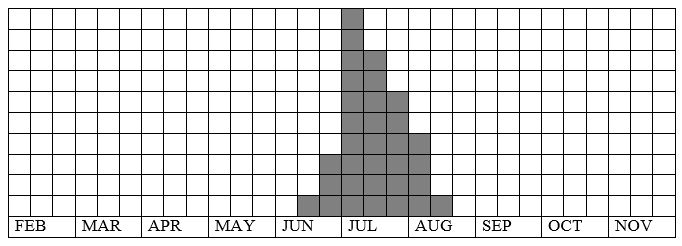
Fig. 52-2. Maculinea arion, habitat characteristics.
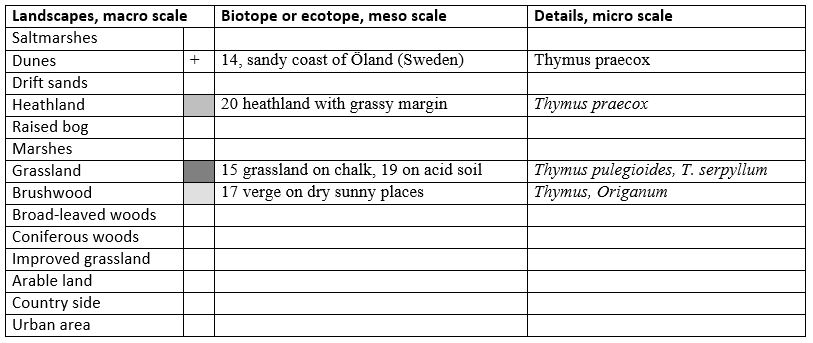
Fig. 52-3. Maculinea arion, climate matrix, heat-sums 500 - 2000°d.
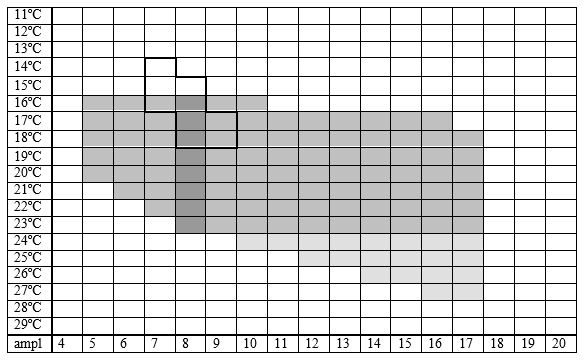
|










